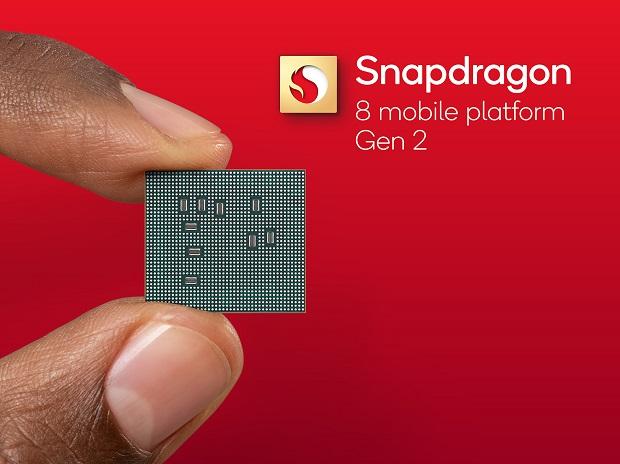[ad_1]
American chipmaker Qualcomm on Wednesday announced the Snapdragon 8 Gen 2 mobile platform for next-generation premium flagship smartphones. Global original equipment makers and smartphone brands, including ASUS Republic of Gamers, HONOR, iQOO, Motorola, Nubia, OnePlus, OPPO, REDMAGIC, Redmi, SHARP, Sony Corporation, Vivo, Xiaomi, MEIZU, and ZTE, will adopt this system-on-chip – said the company in a statement. The first commercial devices based on the Qualcomm Snapdragon 8 Gen 2 chip are expected to launch by the end of this year.
The Snapdragon 8 Gen 2 has an octa-core architecture with one prime core (3.2GHz), four performance cores (2.8GHz each), and three efficiency cores (2.0GHz each). For graphics, there is an Adreno GPU with support for Vulkan 1.3 and OLED aging compensation tech. It is the first chip from Qualcomm to support real-time hardware-accelerated ray tracing engine for life-like light, reflections, and illuminations in mobile games. Besides, it supports Unreal Engine 5 Metahumans Framework.
With the new chip, Qualcomm doubled down on chip performance with regard to artificial intelligence. The Snapdragon 8 Gen 2 is tuned to support new image sensors from Sony Semiconductor Solutions and Samsung. It is the first Snapdragon chip to include an AV1 codec with support for video playback up to 8K HDR at 60 frames per second.
In terms of connectivity, the Snapdragon 8 Gen 2 features AI-backed 5G, Wi-Fi 7, and dual Bluetooth. The chip has an integrated Snapdragon X70 5G Modem-RF system powered by Qualcomm 5G AI processor, which uses AI to enhance 5G upload and download speeds, coverage, latency, and power efficiency. It is the first Snapdragon platform to support 5G+5G/4G dual-SIM dual-active. For Wi-Fi 7 and dual Bluetooth, the SoC has an integrated Qualcomm FastConnect 7800 connectivity system. It supports High Band Simultaneous Multi-Link for peak Wi-Fi 7 performance.
The Qualcomm Snapdragon 8 Gen 2 supports Snapdragon Sound technology, which enables spatial audio with dynamic head-tracking. The chip support for 48kHz lossless music streaming.
[ad_2]
Source link



